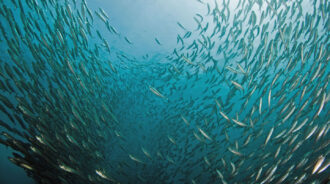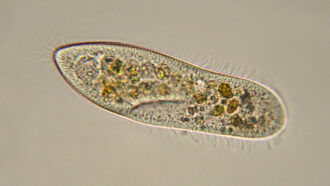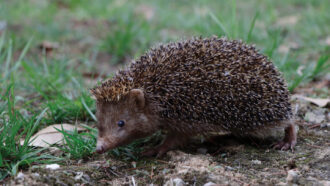All Stories
-
 Animals
AnimalsSwimming in schools lets fish save lots of energy
Each tail flap uses less than half as much energy than swimming solo, making it easier for fish to catch their breath after an underwater sprint.
-
 Artificial Intelligence
Artificial IntelligenceTo ‘green’ AI, scientists are making it less resource-hungry
Energy demands of ChatGPT and similar AI tools can threaten Earth’s climate. So researchers have begun redesigning how to run data centers and build AI.
-
 Physics
PhysicsHow much fruit can you pull from a display before it topples?
About 10 percent of the fruit in a tilted market display can be removed before it will crash down, computer models show.
-
 Animals
AnimalsPaw-print DNA lets scientists track out-of-sight polar bears
This environmental DNA can aid in conserving species that are hard or dangerous to observe.
-
 Life
LifeScientists Say: Protist
Unified by a few key traits, these diverse organisms come in all shapes and sizes.
-
 Health & Medicine
Health & MedicineThe teen brain is especially vulnerable to the harms of cannabis
Today’s concentrated cannabis products — with higher THC levels — may pose greater risks of addiction and psychosis than ever before.
-
 Animals
AnimalsA newfound type of hedgehog is small, dark and adorable
At first, this hedgehog was mistaken for a lookalike relative. But its teeth, skull shape and DNA confirmed it as a new species.
-
 Science & Society
Science & SocietyMusic has the power to move us physically and emotionally. Here’s why
The way music impacts the brain can improve mood and overall health.
-
 Animals
AnimalsHere’s how kingfishers avoid concussions during high-speed dives
Understanding the genetic adaptations that protect the birds’ brains as they dive might one day offer clues to protecting human brains.
-
 Materials Science
Materials ScienceLet’s learn about graphene
Scientists have been trying to understand and harness this material’s superpowers since its discovery in 2004.
-
 Math
MathThis civil engineer turns to math to make energy more affordable
Destenie Nock uses computer algorithms to help identify households struggling to afford utilities.
-
 Physics
PhysicsScientists Say: Polarized light
Sunlight, lamplight and other lights are usually unpolarized. But passing light waves through filters can ‘polarize’ them.